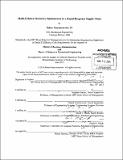| dc.contributor.advisor | Stephen Graves and David Simchi-Levi. | en_US |
| dc.contributor.author | Giacomantonio, Robert | en_US |
| dc.contributor.other | Leaders for Global Operations Program. | en_US |
| dc.date.accessioned | 2013-09-24T19:35:48Z | |
| dc.date.available | 2013-09-24T19:35:48Z | |
| dc.date.copyright | 2013 | en_US |
| dc.date.issued | 2013 | en_US |
| dc.identifier.uri | http://hdl.handle.net/1721.1/80995 | |
| dc.description | Thesis (M.B.A.)--Massachusetts Institute of Technology, Sloan School of Management; and, (S.M.)--Massachusetts Institute of Technology, Engineering Systems Division; in conjunction with the Leaders for Global Operations Program at MIT, 2013. | en_US |
| dc.description | Cataloged from PDF version of thesis. | en_US |
| dc.description | Includes bibliographical references (p. 91-92). | en_US |
| dc.description.abstract | The motivation for multi-echelon supply chain management at Nike is to more cost-effectively accommodate customer-facing lead time reduction in the rapid-response replenishment business model. Multi-echelon inventory management, as opposed to a traditional finished-goods only philosophy, provides two clear benefits to a make-to-stock supply chain: first, it increases flexibility through staging calculated work-in-process inventory buffers at critical supply chain links and allowing postponed identification of finished goods; second, inventories held as work-in- process are typically carried at lower cost than finished goods. This thesis details the completion of a project intended to improve Nike's ability to determine optimal inventory levels by balancing cost and service level tradeoffs in a multi-echelon-enabled environment. The goal is to develop an inventory modeling methodology for Nike's supply chain data architecture specifically to evaluate the hypothesis that multi-echelon inventory management will present only limited opportunity for cost reduction in offshore, long lead time make-to-stock supply chains. To directly asses the hypothesis, Llamasoft's Supply Chain Guru optimization software will be deployed to create an inventory optimization model for a specific family of apparel products sold as part of Nike's replenishment offering in North America. The modeling results confirm the hypothesis that multi-echelon inventory management offers little value to the current offshore supply chain. Sensitivity and scenario analysis is utilized to identify significant inventory drivers, areas for substantial improvement, and profitable opportunities for multi-echelon inventory management. | en_US |
| dc.description.statementofresponsibility | by Robert Giacomantonio. | en_US |
| dc.format.extent | 168 p. | en_US |
| dc.language.iso | eng | en_US |
| dc.publisher | Massachusetts Institute of Technology | en_US |
| dc.rights | M.I.T. theses are protected by
copyright. They may be viewed from this source for any purpose, but
reproduction or distribution in any format is prohibited without written
permission. See provided URL for inquiries about permission. | en_US |
| dc.rights.uri | http://dspace.mit.edu/handle/1721.1/7582 | en_US |
| dc.subject | Sloan School of Management. | en_US |
| dc.subject | Engineering Systems Division. | en_US |
| dc.subject | Leaders for Global Operations Program. | en_US |
| dc.title | Multi-echelon inventory optimization in a rapid-response supply chain | en_US |
| dc.type | Thesis | en_US |
| dc.description.degree | S.M. | en_US |
| dc.description.degree | M.B.A. | en_US |
| dc.contributor.department | Leaders for Global Operations Program at MIT | en_US |
| dc.contributor.department | Massachusetts Institute of Technology. Engineering Systems Division | |
| dc.contributor.department | Sloan School of Management | |
| dc.identifier.oclc | 857788837 | en_US |
